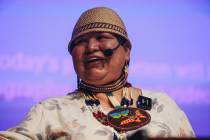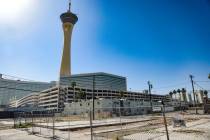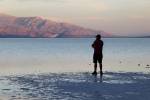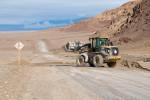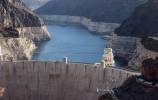‘A special time’: Hundreds flood Death Valley to kayak in reborn Lake Manly

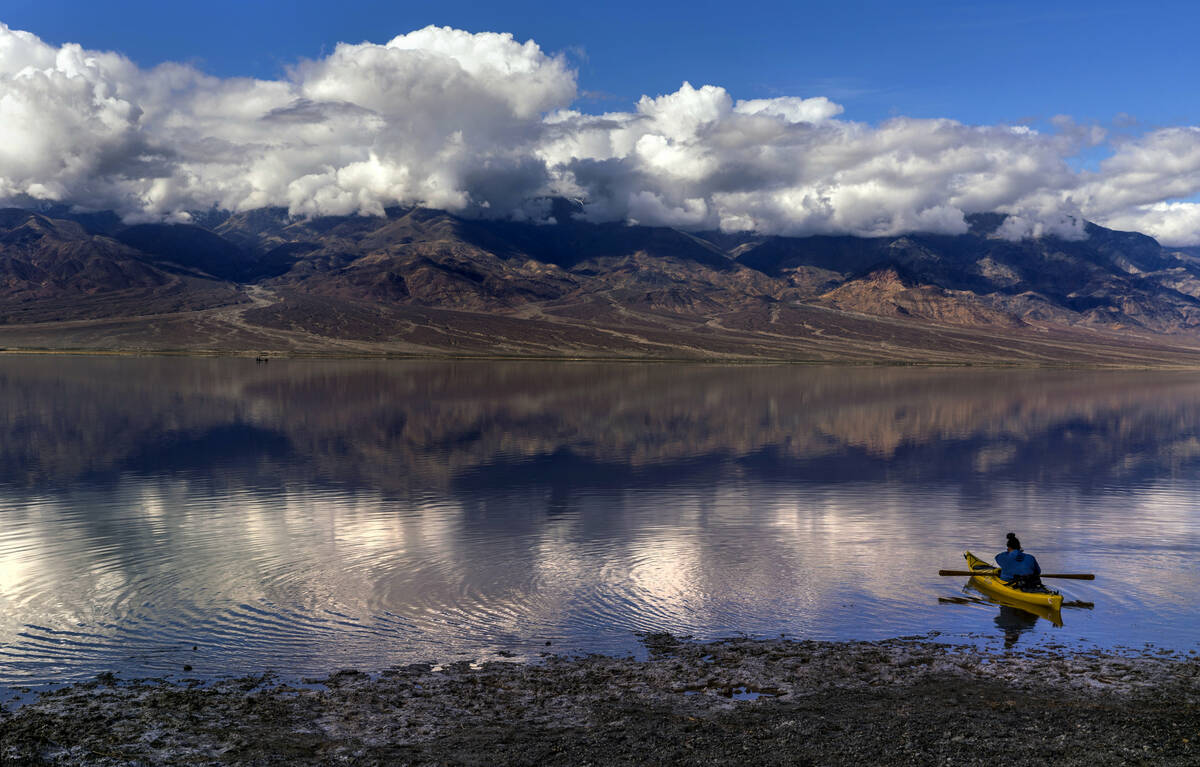

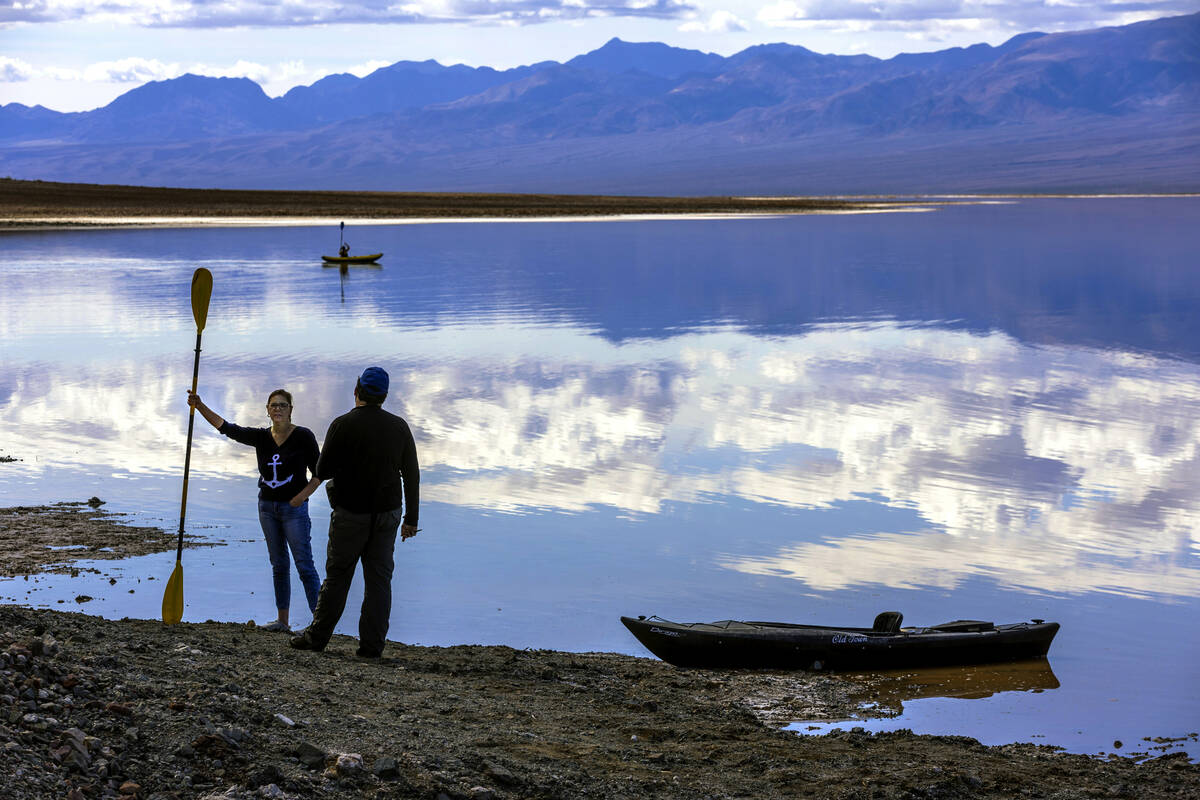
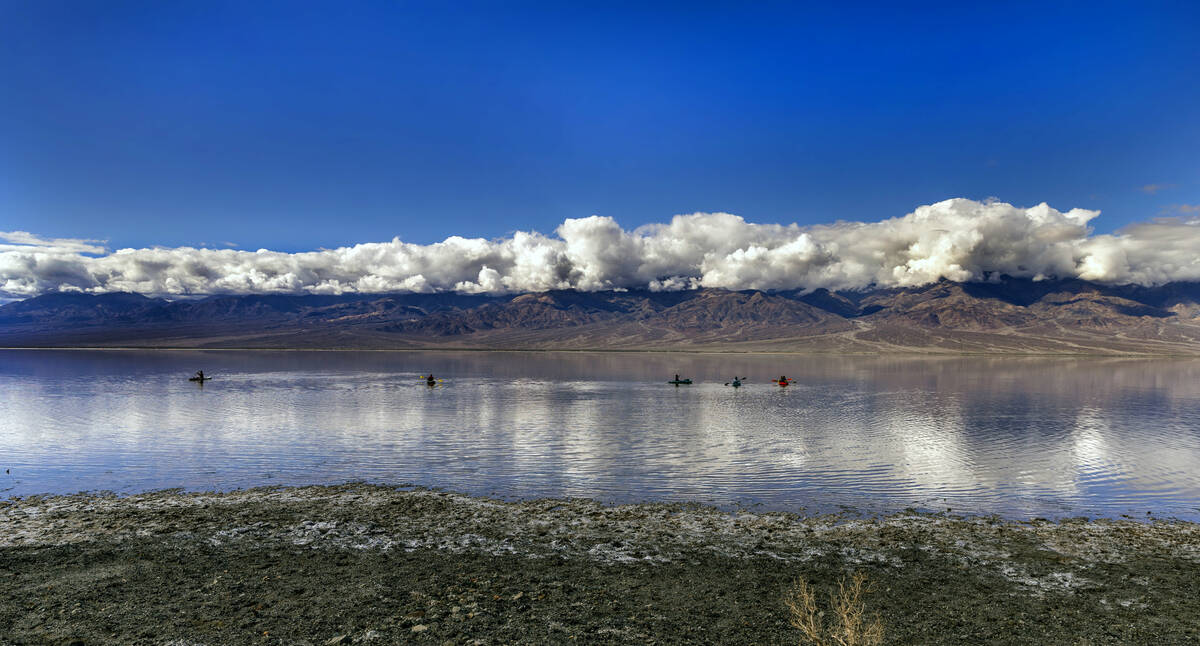








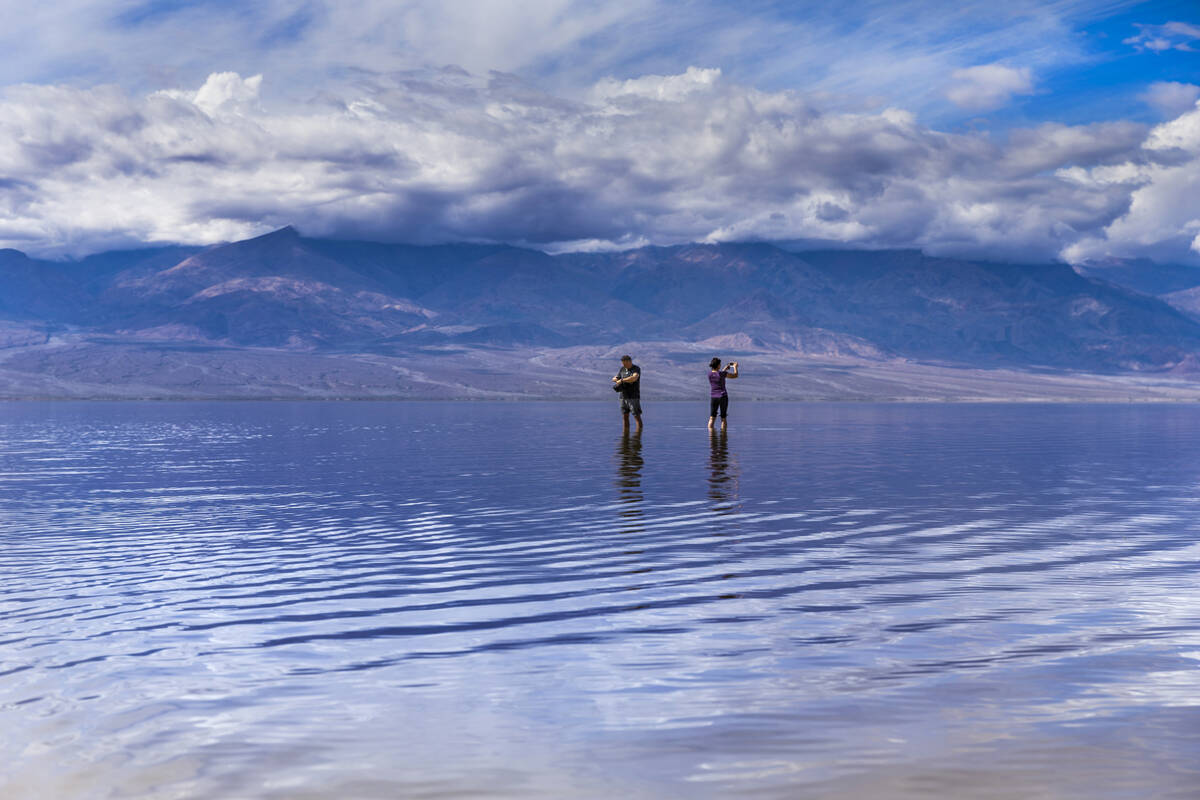




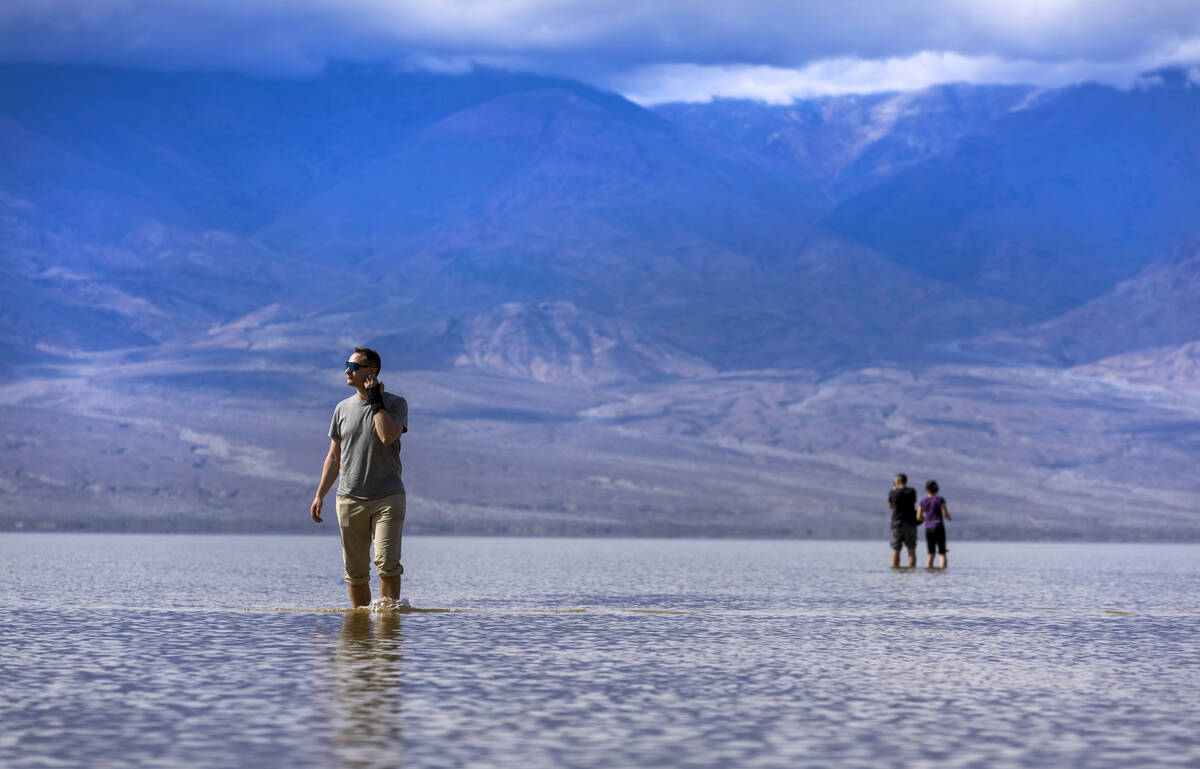








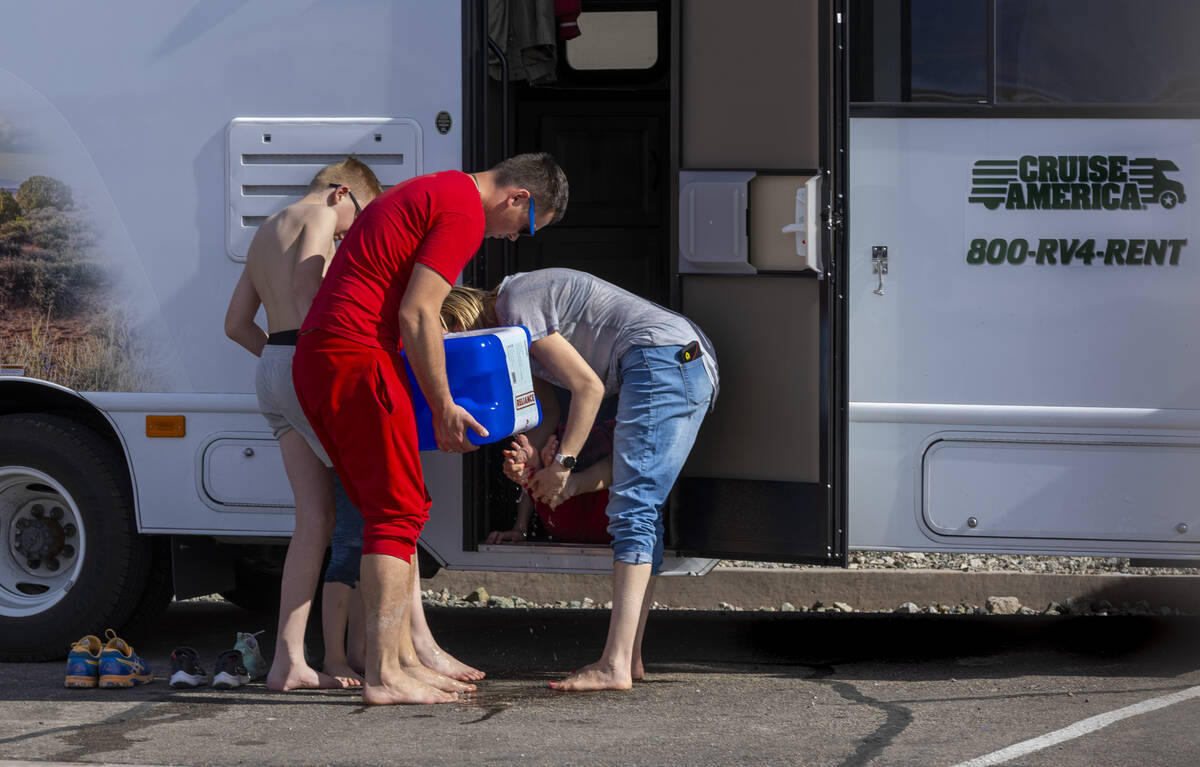
Perched on a chair atop the camper van he calls home, Zack Wilfley gazed at a swarm of visitors quickly throwing off their shoes to wade in Badwater Basin’s flooded salt flat.
The part-time poet, photographer and whitewater rafting instructor spends his life on the road traversing the West’s most impressive landscapes. Wednesday brought him to Death Valley National Park in California, where hundreds have and will continue to flock to kayak over the next week or so in North America’s driest place.
“I call it watching nature TV,” Wilfley said with a grin.
Only about 1 foot deep, the salty water forms Lake Manly, as it’s informally known, which formed after a deluge of rain from Hurricane Hilary and California’s atmospheric rivers over the past six months. The 6-mile span of the lake is impressive yet fleeting as the park heats up and the lake slowly dries once again.
Water with an expiration date
Within two weeks, the lake won’t be deep enough to kayak in. Rangers estimate it will fully dry up by the end of April.
The lake, named for American pioneer William L. Manly, hasn’t filled up since 2005, when water stuck around for about a week. It was once full in the Ice Age as a result of melting glaciers and has come back in smaller iterations throughout history.
And after national news coverage of the most recent version of the lake, interest in the park has spiked — Sunset Campground hasn’t opened an overflow space since 2016, but all 270 spots in the park’s largest campground filled up last weekend, Death Valley park ranger Abby Wines told the Las Vegas Review-Journal.
“It’s often hard to motivate people to go to a place that’s so close by because you can always postpone it,” Wines said. “But if you’re in Vegas, now is a special time to come to Death Valley.”
Recent extreme rains aren’t clearly connected to climate change, National Weather Service meteorologist Andrew Gorelow said. This is an El Niño year — a climate phenomenon that warms up the Pacific Ocean and brings rain to the American Southwest.
That has proven to be true as Death Valley recorded 4.9 inches of rain over the past six months. Hurricane Hilary brought 2.2 inches on Aug. 20, and an atmospheric river gave the park 1.5 inches between Feb. 4 and 7.
If rain conditions are as extreme as they were in this period, another Lake Manly formation is possible, Gorelow said.
“If it happened this year, it can certainly happen again,” he said. “We just need the right setup.”
The deluge led the storied lake to make another rare appearance. But kayaking this time around hasn’t been a possibility until recently.
Nature buffs from near and far
The lake was deep enough to kayak in August, but extensive flooding from Hurricane Hilary damaged the roads. Limited driving became possible when the roads opened in October, but the lake had shrunk considerably by then.
Today, with the roads open and the lake high enough to kayak for a short window, many are making the trek out to see what some are calling a once-in-a-lifetime natural marvel.
Two of them were Anita and Herb Miller of Eagle Point, Oregon, who made a stop in Death Valley on their way to Palm Springs. The couple stationed their RV a mile south of the Badwater Basin main parking lot, where the water is closest to the road.
Emerging from the water with her inflatable kayak Wednesday morning, Anita Miller’s clothes were doused in dried salt that clung to the fabric like flour. The mirror-like reflections of the mountains on the water, though, were well worth it, she said.
“It looks like painted hills or an artist’s canvas,” she said. “Every color is out there.”
Another group on the water Wednesday was Sara Moreno and Amanda Dudley, friends from California City, California. They were surprised that the water was so salty and that the wind seemed to push around their kayak.
Coming out to see the lake after hearing of it through national news sites was a no-brainer, Dudley said.
“Absolutely,” Dudley said when asked if they were eager to kayak Lake Manly. “When are we going to be able to do this again?”
Badwater Basin, at 282 feet below sea level, also is the final destination for water from the Amargosa River, which begins in Beatty. The flow feeds the underwater aquifer.
Amargosa Conservancy Executive Director Mason Voehl hopes the reformation of Lake Manly provides an opportunity to learn about threats to the river and the environment of the Amargosa Valley.
“The difficulty with the Amargosa is that it is a system that is seldom seen,” he said. “I think this event shows that it’s the lifeblood of the desert. We owe it to future generations to be able to see the lake again, but that only happens if we are smart with how we conserve and manage our groundwater.”
Contact Alan at ahalaly@reviewjournal.com. Follow @AlanHalaly on X.









